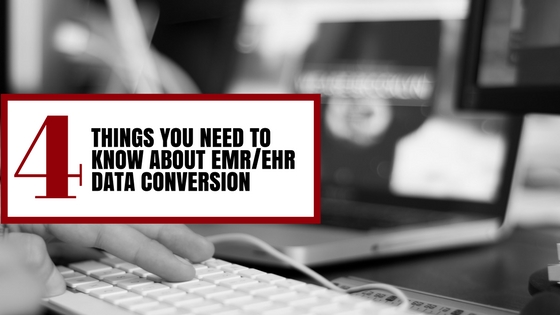Wouldn’t it be nice to just wave a magic wand and move all the data from our old EHR to the new computer system? Unfortunately, it’s just not that easy. Some people are surprised to learn that their new EHR data conversion vendor won’t convert all their historic data to the new computer system, but there are several reasons you wouldn’t want ALL your historic data in the new system.
Wondering what those reasons are? Don’t worry, we’ve got you covered.
1. Organization
The new system is sure to be organized differently than the legacy system – with different data elements, structures, and links. There is never a one-to-one match on data schemas between the old and new systems, so moving absolutely everything over will likely cause more of a problem than a solution.
2. Validation
It’s difficult to validate the accuracy and completeness of the data you want to import from the old system. Therefore, the new EHR vendor doesn’t want to risk starting out with a bad, inaccurate database. You’ve heard the saying “garbage in garbage out,” right? Well, it applies here.
3. Tidiness
This is a golden opportunity to start with a clean slate. For example, some users want to start fresh in the new EHR by building, re-wording or re-classifying codes and categories. Patient data is obviously a vital part of your business, so why not take this time to make sure it’s nice and tidy?
4. Time & Money
Ultimately, data conversions are a lot of work, which translates into a lot of time and money. And I don’t know about you, but I certainly don’t want to use more resources than necessary when it comes to my business.
This is why the new EHR vendor will likely lobby for you to start out with a clean slate and populate the new database with only current patients, current balances, current information, etc. This leaves behind a lot of historic detail and years of data.
What Do You Do With All The Old Data?
Well, the medical and financial information in the old system needs to be put in a safe, secure place so the information is made available to those who need it. In other words, it needs to be archived after an EHR data conversion.
An archive is a separate system from your new EHR. When users sign into the archive program, they can access all the legacy data. Depending on their user rights they may see all or some of the historic reports and data stored and organized in the system. The most common functions of the archive system are to:
- Search and query – clinical and financial data for “Continuity of Care”
- Download, view, and print reports for “Release of Information”
For example, in the archive, you can see all patients and their historic charts, medications, treatments, billings, insurance claims, payments, etc. Queries and reports can be accessed from computers, laptops, iPADs, or mobile devices.
Triyam’s archival product is called Fovea. It is a software with extensive functionality to store, query, view, print, or email documents like medical records and financial reports.
Ready to archive your data? Contact us today for a free quote!

